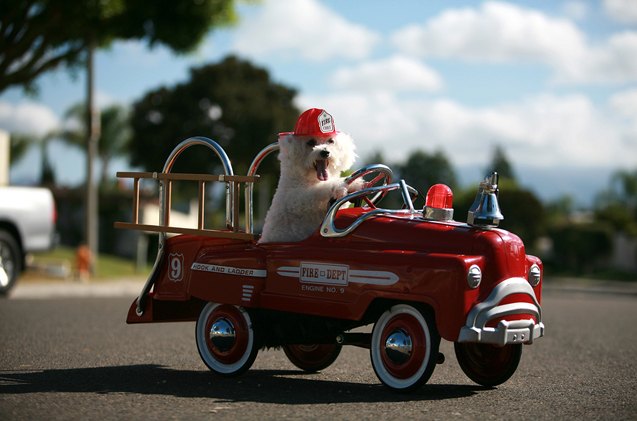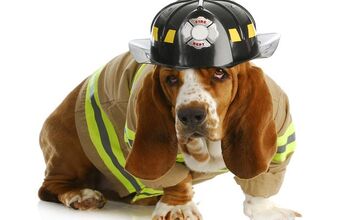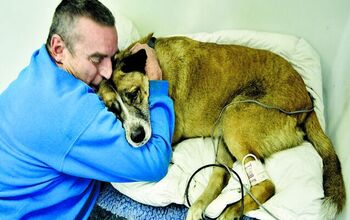How To Prevent And Prepare For Fire Safety In Your Pet-Friendly Home

Remember the tale of Mrs. O’Leary’s cow? Yes, the one rumored to have knocked over a lantern while being milked. It ultimately started the Great Chicago Fire of 1871 that leveled thousands of buildings and killed 300 residents. What could she have done differently? Well, her decision to set an open flame by the back end of a restless cow in a barn full of dry straw would have been a good place to start!
Related: 5 Important Tips On Dog Proofing Your Balcony
What about you? What steps have you taken to safeguard your home from determined dogs and curious kitties that are as ignorant to the perils of fire as Chicago’s bossy? With July 15 marking National Pet Fire Safety Day, and stats showing approximately 1,000 house fires are started by our little guys each year, it’s time to take a pro-active approach to safeguarding your home.
Prevent:
- Don’t leave your pets unattended around an open flame and make sure to thoroughly extinguish any flame before you leave home.
- If your pooch is big enough to help himself to goodies off the counter, he’s big enough to accidentally turn your stove on. Remove stove knobs when you leave the house; this is the number-one cause of fires started by pets.
- Flameless candles are a great alternative to the real thing and take the danger out of your pet knocking over a lit flame.
- Avoid glass water bowls on wooden decks as the sun’s rays can use them as a magnifying glass, heating up the deck and starting a fire. Opt for stainless steel or ceramic.
- Secure younger pets when you’re heading out. Keep them away from potential fire-starting hazards by crating or using baby gates in secure areas.
Related: Do You Have An Emergency Plan For Your Dog?
Prepare:
- Consider using monitored smoke detectors. They are connected to a monitoring center that allows emergency responders to be contacted when your pets are trapped.
- Affix a Pet Alert Window Cling: Write down the number of pets inside your house and attach the static cling to a front window. This critical information saves rescuers time when locating your pets. Make sure to update the number of pets listed.
- Keep collars on pets and place leashes near the door so first responders can use them to lead pets to safety. Pets are often waiting at doors and run out when firefighters come in.
- Know where your pets hide, as this may be the first place they go if there is a fire. Make sure your neighbors have this information in case fire breaks out when you aren’t home.
- Plan to bring your pet’s carrier when you evacuate the house. It can be a safe and comforting place for your pet to be, especially when the fire truck arrives.
Mary Simpson is an animal-loving writer and communications professional. A soft touch for anything stray, she shares her century home with an eclectic collection of rescues that include orange tabby Chico, tuxedo Simon, and jet black Owen. She enjoys running, politics, exploring local wine regions and is an avid supporter of the “shop local” movement.

Sharing space with three seriously judgy Schnoodles and a feline who prefers to be left alone. #LivingMyBestLife
More by Mary Simpson























